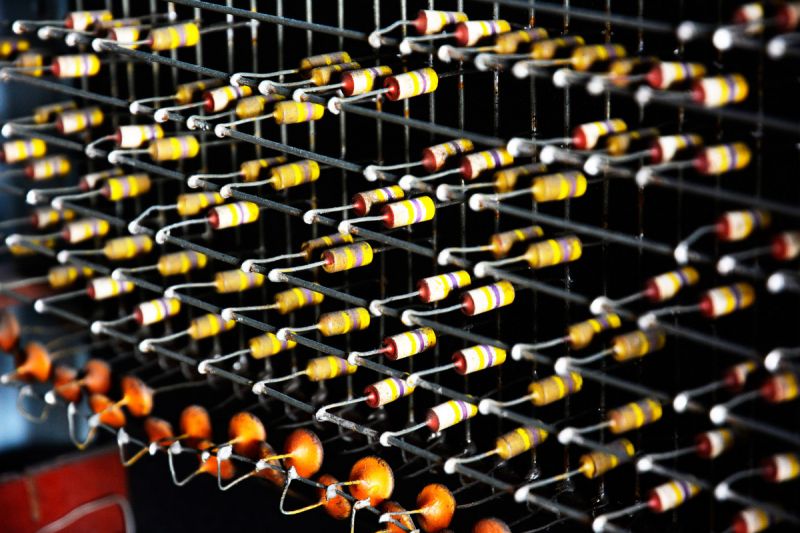The Hollerith Electronic Computer (HEC) is amongst the earliest surviving electronic computers in the world. It was built by the British Tabulating Machine Co Ltd (BTM) who at that time dominated the British and Commonwealth market for punched card data processing equipment.
HEC was based on an original design by Andrew Booth of Birkbeck College, London University. His design for a small scientific computer was adapted by Raymond Bird at BTM in 1951 to become a prototype commercial computer designed to work with the punched card equipment familiar to BTM's customers. The first production machine was delivered early in 1955, and the subsequent 1200 series of computers were highly successful.
As BTM's first computer, the HEC prototype became part of a collection of historic equipment created by the successor company International Computers and Tabulators Ltd (ICT). This collection was subsequently broken up and offered to museums around the UK. HEC was given to Birmingham Museum and Art Gallery in 1972, and is now on extended loan to TNMOC where it can be seen on public display for the first time in many years.
The origins of data processing using punched cards go back to Herman Hollerith and the US 1890 census, when data for every person was punched onto a card. Hollerith built machines which partially mechanised the collation of the census data.
Hollerith's Tabulating Machine Company (TMC) later became International Business Machines Co Ltd (IBM) in 1917 following a series of mergers. A UK offshoot of TMC was established in 1904 to sell TMC's machines which was renamed BTM in 1907.
By 1951, BTM realised it needed a computer to supplement its offering. At that time there were four major UK research groups actively building computers, as well as some secret defence related projects.
Manchester University had partnered with Ferranti to build the Mark 1 and successive machines. Cambridge were working with Lyons, who successfully adapted Maurice Wilkes' EDSAC into the Lyons Electronic Office (LEO) for commercial work. National Physical Laboratory (NPL) were working with English Electric who turned the ACE, designed by Alan Turing, into their DEUCE computer.
Dr Raymond Bird in front of the machine he engineered more than 60 years ago.
The fourth group was led by Andrew Booth at Birkbeck College. Working with a very modest budget, his designs were compact but slower than the other groups, but consequently were much cheaper to build. These characteristics were a good fit for BTM's customer base and hence it was to Booth who BTM turned.
Booth pioneered the development of the magnetic drum, which he used as the primary memory storage for his computers. He had been inspired by seeing a US office dictating machine which used magnetic coated paper to record messages. Although paper proved unsuitable for his purposes, he stuck with the basic idea and in 1947 created a device based on a magnetised nickel coated brass drum.
Another of Booth's major contributions was the development of a fast hardware multiplier, despite having been assured by the great John von Neumann that such a thing was impossible! His design became known as the Booth multiplier and variants of it can be found today in billions of chips used in computers and phones.
These ideas came together in Booth's Automatic Purpose Electronic Computer (APEC) design, which he was working on in 1951 when approached by BTM.
Raymond Bird and his small team visited Booth in March 1951 to copy the APEC designs. Returning to BTM's Letchworth factory they quickly designed the additional I/O interfaces needed for punched card equipment and named the resulting computer the Hollerith Electronic Computer (HEC). HEC was running by the end of 1951, about six months before Booth's first APEC machine!
HEC's circuits are built from double triode and diode valves, which at the time were plentiful and cheap. The HEC drum was manufactured by Booth and consists of 32 tracks each containing 16 words, for a total of 512 words. It rotated at 3000 rpm, and is mounted on the front of the right hand rack.
Unfortunately the especially modified BTM tabulator that formed the original I/O for the HEC prototype hasn't survived.
Since arrival in the First Generation Gallery at TNMOC in 2015, a team of volunteers has been cleaning and documenting the machine. The only surviving contemporary documentation is a high level block diagram and Bird's lab notebooks. We have since been able to fill in a lot of detail on the instruction set and the circuit techniques used.
The full story of the HEC Computer can be found in the excellent book by Roger Johnson and Kevin Murrell, published by TNMOC
















